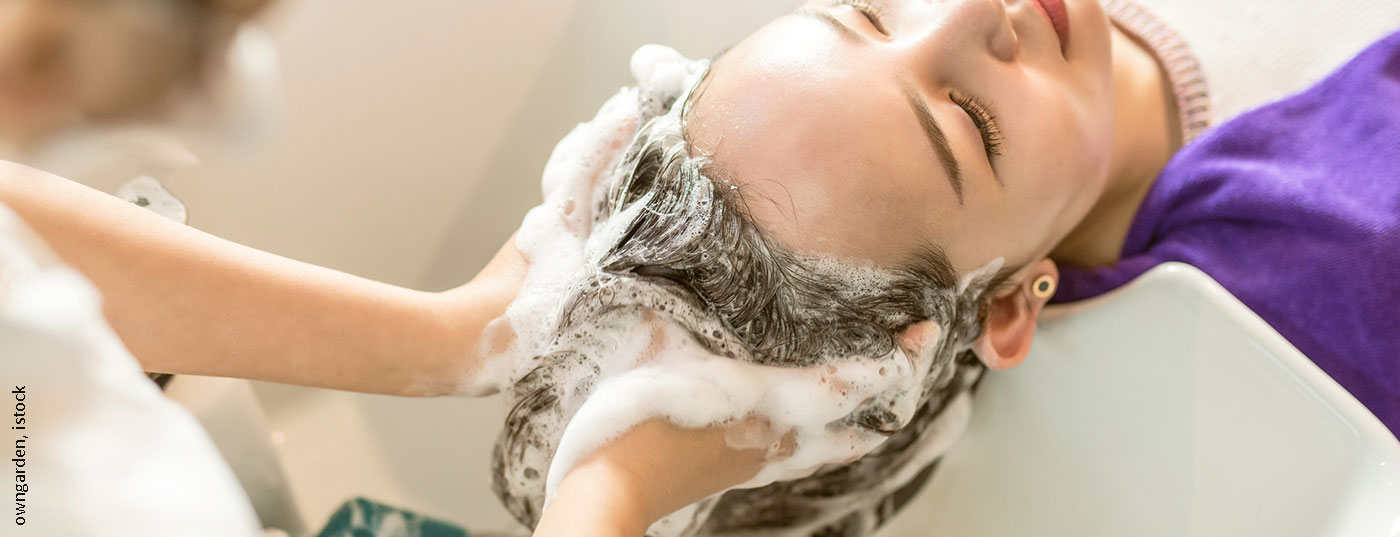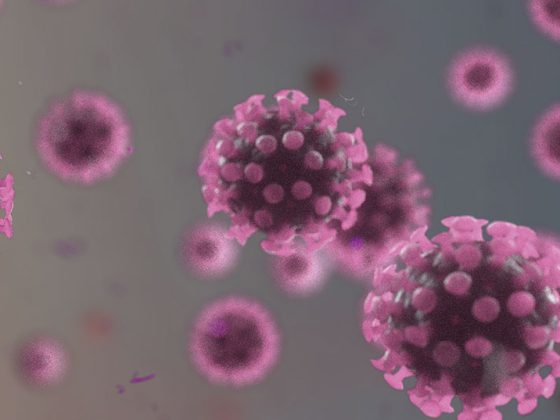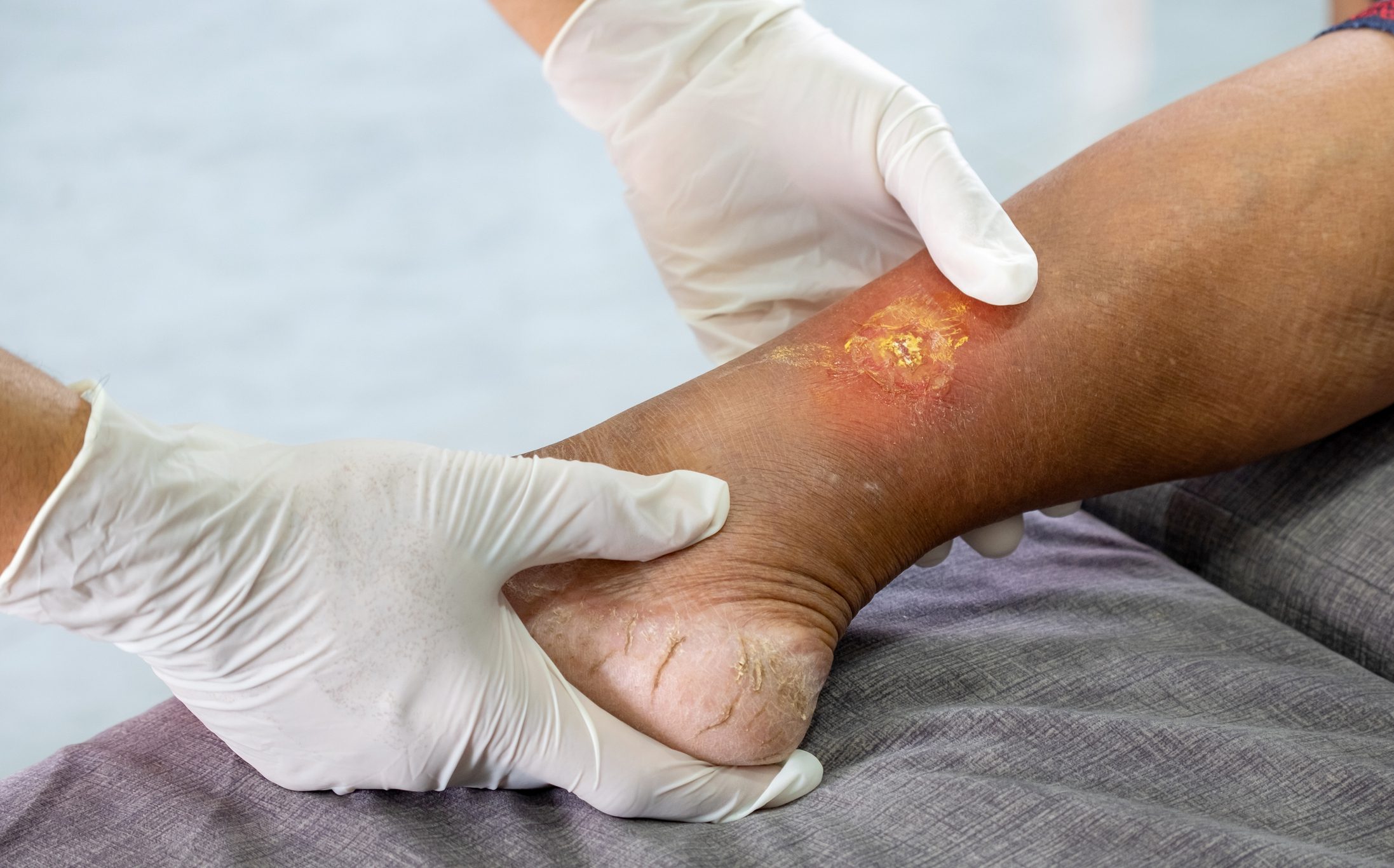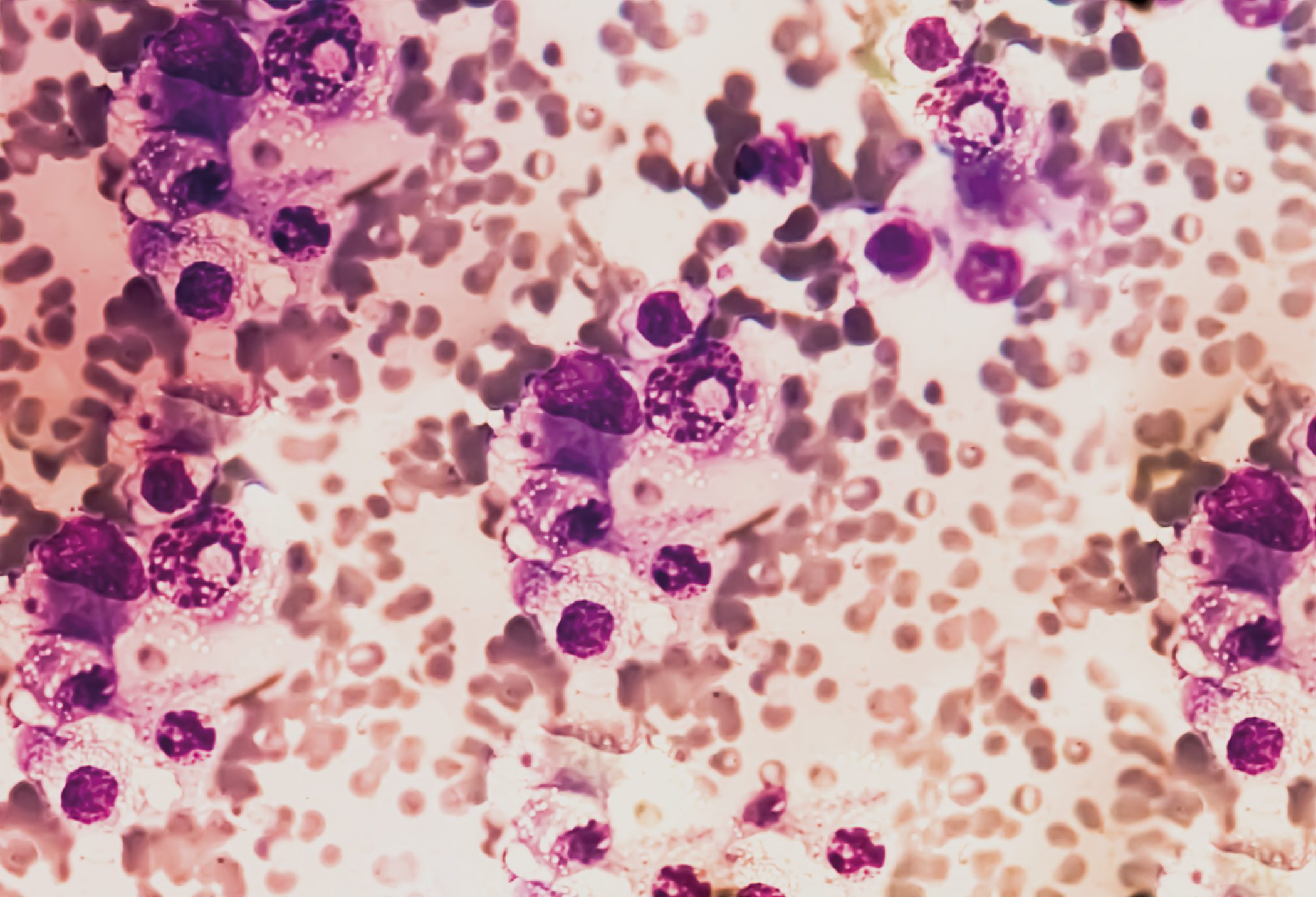Occupational eczema is one of the most common occupational diseases in Switzerland and neighboring countries. With around 450 new cases per year, they account for almost 20% of recognized occupational diseases in Switzerland. The cases recorded in the statistics on occupational diseases are usually only the visible “tip of the iceberg”. Many patients with occupational dermatoses do not report their skin problems as an occupational disease.
Occupational eczema is one of the most common occupational diseases in Switzerland and neighboring countries. With around 450 new cases per year, they account for almost 20% of recognized occupational diseases in Switzerland. The cases recorded in the statistics on occupational diseases are usually only the visible “tip of the iceberg”. Many patients with occupational dermatoses do not report their skin problems as an occupational disease. Sometimes the connections are not recognized, even when they seek medical treatment. Not to be underestimated is also the fear of losing one’s job if the occupational skin problem would become known in the company.
Diagnosis, causes
In hand eczema, a distinction must be made between exogenous and endogenous causes, and in the latter also between allergic and irritant causation. The most common endogenously caused hand eczema are atopic and so-called dyshidrotic or vesicular eczema. A predisposition to atopic hand eczema is considered a risk factor for the development of occupational eczema. In many cases of chronic hand eczema, a superposition of occupational exposure and atopic skin diathesis can be demonstrated.
In numerous manual and industrial occupations, but also in nursing, gastronomy and hairdressing, irritant eczema is observed after exposure to skin-irritating substances. In situations where eczema develops shortly after exposure to a harmful substance, the connection is usually easy to identify. This is more difficult in the case of so-called cumulative-toxic contact eczema, a form of chronic hand eczema. This develops only after prolonged exposure to intrinsically mild irritants or combined damaging agents and is characterized by dry scaling, occasionally rhagadiform skin lesions. It can be difficult in individual cases to work out the series of unfavorable effects such as repetitive wet work, frequent hand washing and disinfection of the hands, contact with various skin-irritating substances and work steps with mechanical skin damage in the medical history.
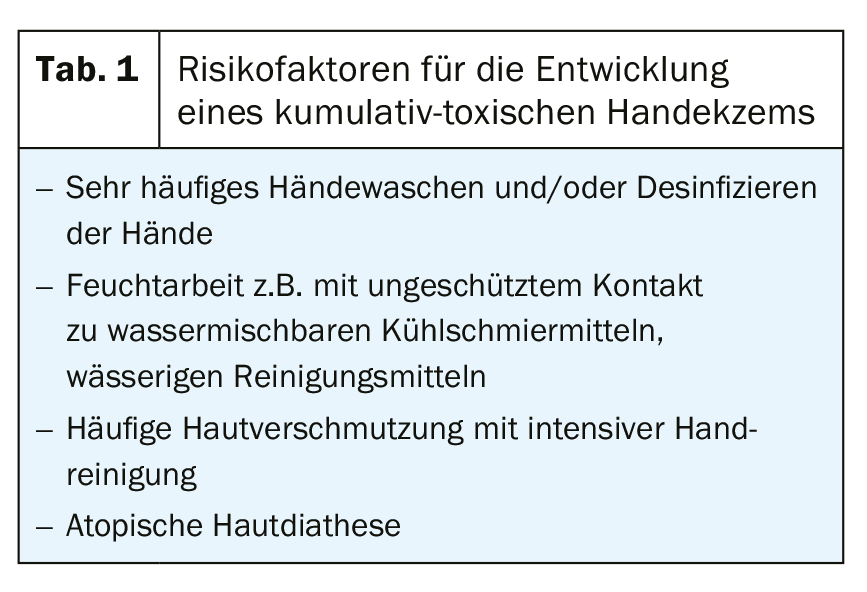
Allergic contact dermatitis is observed significantly less frequently than irritant/toxic contact dermatitis in actual everyday work. Allergic contact dermatitis may develop after contact with sensitizing agents after weeks, but also after months or even years. Severe itching, blistering and often oozing of the skin are characteristic of acute allergic eczema. Upon re-exposure to the allergen, a new eczema flare-up occurs rapidly in each case. With prolonged or repeated exposure to the allergen, a so-called intrinsic course of eczema may occasionally occur.

In Switzerland, allergic contact eczema due to sensitization to epoxy resins has been at the top of the ranking list for years. Epoxy resins are typically applied as two-component systems, with mixing of resin and hardener immediately before application (Figs. 1 and 2) . This form of allergic eczema is often severe and can manifest after only a short exposure. Affected individuals may also still suffer from asthmatic symptoms. In recurrence, uncovered areas of the body, such as the upper arms, neck, and face, are often affected. Aerogenic triggering is suspected in this case. With strict avoidance of exposure, the prognosis is usually favorable. However, if it is not possible to avoid working with these substances, a ruling of unsuitability must be considered by Suva. Workers in plants that coat floors with epoxy resins are particularly exposed. The work with the said working materials is carried out over a large area. Suva has launched a skin protection initiative specifically for this industry. Further information can be found on the Suva homepage (www.suva.ch/epoxidharz).

Occupational eczema is also frequently found to be associated with lubricants. In metalworking and workshops, there is intensive daily contact with cooling lubricants, hydraulic oils and other types of lubricants containing mineral oil and synthetic lubricants. Due to the intensive contacts, irritative and sometimes, in a further step, allergic eczema can develop in particular, which again and again leads to leaving the profession. Due to the widespread use of lubricants in industry and commerce, Suva has also launched a skin protection initiative for this purpose. In cooperation with the professional associations, the attention of those responsible in the companies and of every employee is focused on this skin protection topic (www.suva.ch/schmierstoffe).
Some trades particularly affected
Comparatively many occupational eczemas are registered in the hairdressing industry. Skin problems often occur here during the apprenticeship period, initially mostly as irritant eczema caused by the pronounced damp work. Later, a contact allergy can graft on. Most sensitize to hair dye ingredients. More rarely, relevant sensitization to preservatives or nickel is found. In case of repeated occurrence of eczema episodes and proven relevant allergy to indispensable occupational substances, a non-suitability order is often unavoidable here as well. Over the past 4 years, Suva, with the support of the professional association and subject teachers, has implemented a targeted skin protection initiative that will continue over time. At the heart of the initiative is the message that hair should be consistently washed with appropriate protective gloves. This allows to avoid the leaching of the hands, which is at the beginning of the unfavorable development. Preventive messages can also be found on the Suva homepage (www.suva.ch/coiffure). They were very successfully supplemented by messages on social media channels and by messages from the skin protection campaign “www.2haende.ch”, whose content is targeted at vocational schools.
In recent years, sensitization to the preservative methylisothiazolinone and other isothiazolinones has often been observed. Even if it can mostly be explained by contacts in the private environment, it can be professionally relevant for painters, in metalworking (as an ingredient of cooling lubricants) and employees in coiffure, massage and cosmetics. Unprotected skin contact with industrial cleaning agents and hygiene measures involving very frequent hand washing, combined with skin disinfection, are other common reasons for barrier damage to the skin. Here, too, an unfavorable development into manifest hand eczema can be prevented with consistent skin protection and skin care.
Procedure for occupational dermatosis
In occupational dermatoses, a suspected diagnosis can often be made with a targeted history and the clinical findings. If simple treatment measures are not sufficient and especially if allergic contact dermatitis is suspected, a specialist clarification with epicutaneous testing and initiation of an adequate step-by-step therapy should be arranged. When an occupationally relevant allergy is identified, good information about the occurrence of the allergen, its synonyms and the appropriate protective measures can often have a significant favorable influence on the further course.
If there is a reasonable suspicion of occupational dermatosis, the affected person should be motivated to register with the relevant accident insurance company via the employer. This allows for early intervention on the part of the accident insurance company. As the largest accident insurance company in , Suva insures mainly industrial companies, the construction industry, federal companies as well as transport and forestry professions within the scope of its legal mandate. Employees in service businesses (such as hairdressing salons, hotels and restaurants, health care) and in agriculture are therefore not insured with Suva. However, all insurers are guided by the requirements of the Accident Insurance Act, which also regulates the insurance law issues relating to occupational diseases. The accident insurance company clarifies the facts through specially trained case workers and field staff, often with the assistance of occupational physicians and occupational hygienists. Finally, it comments on whether an occupational disease exists. The accident insurance also covers the treatment costs if the contact eczema is recognized as an occupational disease.
Suva is also responsible for occupational health care and thus also for the suitability assessment of employees. If an employee’s existing occupational disease poses a significant risk to the continued performance of his or her previous job, Suva’s occupational medicine department must examine the employee’s suitability. This may be the case, for example, if repeated pronounced eczema episodes with work exposure occur despite appropriate skin protection measures or if an expansion of the allergen spectrum relevant to occupational substances develops. In the case of occupational contact dermatitis, non-fitness orders are comparatively common. The other UVG insurers must forward such cases to Suva. A non-suitability order or conditional suitability order for certain activities is a preventive measure that, depending on the situation, can result in improved protective measures at the workplace, an internal transfer or even a change of job. Under certain conditions, it may lead to integration measures and, in the event of a significant loss of earnings, to transitional benefits. The insured person must register with the cantonal IV office in order for retraining to be examined.
Skin protection
Increasingly, the benefits of skin protection are being recognized in the workplace. Especially in case of contact with typical allergens, in all activities mentioned as frequent causes of toxic contact dermatitis and where hands have to be washed frequently, skin protection measures should be initiated at the workplace. In many places, therefore, skin protection plans are drawn up and employees are trained in skin protection (Fig. 2). To ensure that the principles remain firmly anchored in everyday working life, such training must be carried out repeatedly in the company.
In addition to technical and organizational measures, the employer must also provide skin protection agents and protective gloves. Insured persons with occupational hand eczema often require additional individual consultation regarding skin protection products by a specialist in dermatology or occupational medicine. Information on skin hazards and skin protection can be found on the Suva homepage at www.suva.ch/hautschutz and at www.2haende.ch, a homepage in several languages that focuses on vocational schools and vocational students. In addition to descriptive information on occupational skin hazards and skin protection that can be used for teaching, this homepage also includes recommendations on suitable types of protective gloves for many occupations. To find specific offers for protective gloves, the homepage is linked to www.sapros.ch, Suva’s Internet marketplace for safety products. A very large selection of protective gloves is offered here, grouped by hazard, material and other criteria.
Take-Home Messages
- Occupational eczema is one of the most common occupational diseases.
- With pronounced moist work, irritative hand eczema typically occurs initially. They can be precursors for allergic eczema.
- Contact dermatitis is often caused by epoxy resins, lubricants and working materials in the hairdressing industry.
- Suva skin protection initiatives are underway for this purpose.
- In the case of all employees with an occupational disease and a significant risk if they continue to work, the Suva Occupational Medicine Department is responsible for assessing suitability and, if necessary, for issuing a non-suitability order.
- Information on skin hazards in some occupations and on skin protection can be found on the Suva homepage and the campaign 2haende.ch
More information:
www.suva.ch/arbeitsmedizin (see there under “Material” also Occupational Skin Diseases. Brochure.
Suva number 2869/11 as PDF d and f)
www.suva.ch/hautschutz, www.unfallstatistik.ch
DERMATOLOGY PRACTICE 2020; 30(5): 6-9


